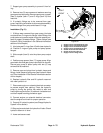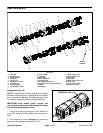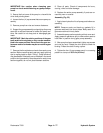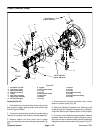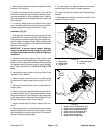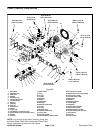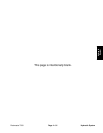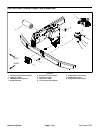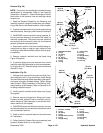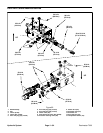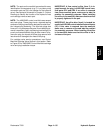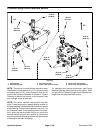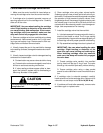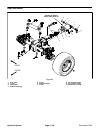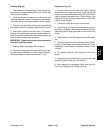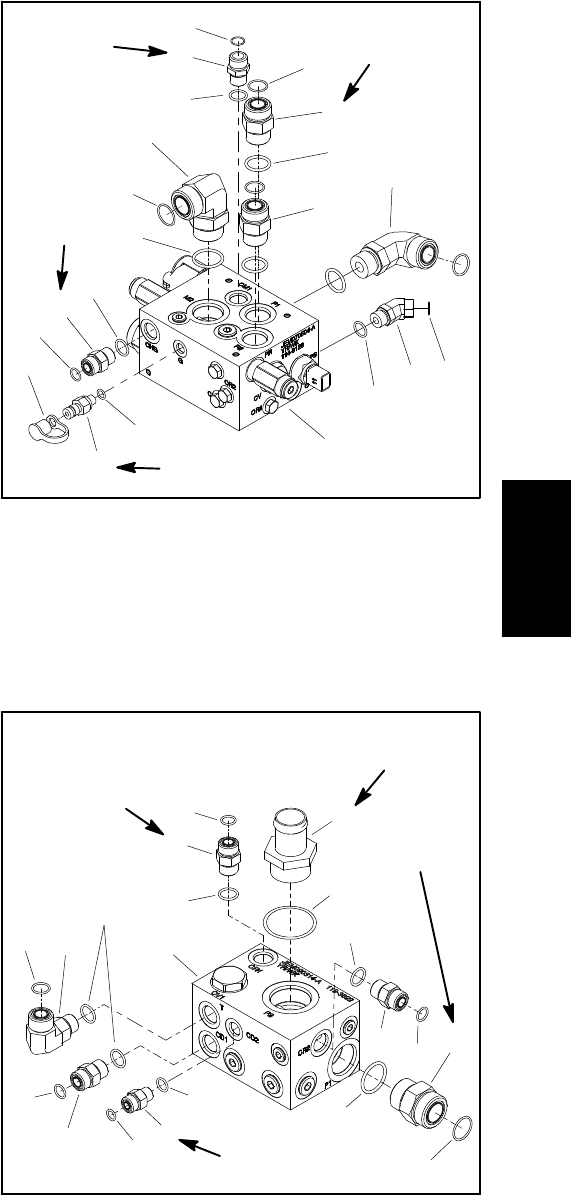
Reelmaster 7000 Hydraulic SystemPage 4 -- 83
Removal (Fig. 59)
NOTE: Theports onthe manifolds aremarked for easy
identification of components. Refer to the Hydraulic
Schematic in Chapter 9 -- Foldout Drawings to identify
the function of the hydraulic lines and cartridge valves
at each port.
1. Read the General Precautions for Removing and
Installing Hydraulic System Components at the begin-
ning of the Service and Repairs section of this chapter.
2. To prevent contamination ofhydraulic system during
manifold removal,thoroughly clean exteriorof manifold.
3. If 4WD/2WD control manifold is being removed, la-
bel wire harness electrical connectors that attach to
manifold components. Disconnect harness electrical
connectors from the solenoid valve coil and electrical
sensors (pressure and temperature).
4. Disconnect hydraulic lines from manifold being re-
moved and put caps or plugs on open hydraulic lines
andfittings. Label disconnectedhydraulic lines forprop-
er assembly.
5. Remove hydraulic manifold from the frame using
Figure 59 as guide.
6. If hydraulic fittings are to be removed from control
manifold,mark fittingorientation toallow correctassem-
bly (Figure 60 or 61). Remove fittings from manifold and
discard O--rings.
Installation (Fig. 59)
1. If fittings were removed from control manifold, lubri-
cate and place new O--rings onto fittings. Install fittings
into manifold portsusing marks made duringthe remov-
al process to properly orientate fittings. Tighten fittings
(see Hydraulic Fitting Installation in the General Infor-
mation section of this chapter). Refer to Figure 60 or 61
for fitting installation torque.
2. Install hydraulic manifold to the frame using Figure
59 as guide.
3. Remove caps and plugs from fittings and hoses.
Properly connect hydraulic lines to manifold (see Hy-
draulic Hose and Tube Installation in the General Infor-
mation section of this chapter).
4. If4WD/2WD controlmanifold wasremoved,connect
wire harness electrical connectors to the solenoid valve
coil and electrical sensors.
5. Check oil level in hydraulic reservoir and add correct
oil if necessary.
6. Follow Hydraulic System Start--up procedures (see
Hydraulic System Start--up in this section).
1. 4WD/2WD manifold
2. O--ring
3. 45
o
fitting
4. O--ring
5. 90
o
fitting
6. Straight fitting
7. O--ring
8. O--ring
9. Check fitting
10. O--ring
11. O--ring
12. Straight fitting
13. O--ring
14. Test fitting
15. Dust cap
Figure 60
4
2
6
5
7
3
1
8
9
2
2
4
4
5
6
10
12
11
13
14
15
50 ft--lb
(68 N--m)
75 ft--lb
(101 N--m)
25 ft--lb
(34 N--m)
20 ft--lb
(27 N--m)
1. Filtration manifold
2. O--ring
3. 90
o
fitting
4. O--ring
5. Straight fitting (3 used)
6. O--ring
7. Straight fitting
8. O--ring
9. O--ring
10. Straight fitting
11. O--ring
12. O--ring
13. Barb fitting
14. O--ring
Figure 61
75 ft--lb
(101 N--m)
2
3
6
8
9
10
11
13
1
5
7
12
14
4
2
5
5
6
6
25 ft--lb
(34 N--m)
50 ft--lb
(68 N--m)
2
75 ft--lb
(101 N--m)
Hydraulic
System



